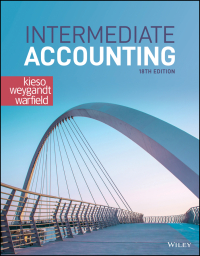Question
Aspen Resources Limited is a U.S. energy company with operations in oil and gas exploration and development (E&P) and refining and marketing (R&M). The marginal
Aspen Resources Limited is a U.S. energy company with operations in oil and gas exploration and development (E&P) and refining and marketing (R&M). The marginal tax rate (Tc ) is 40% and the market risk premium is 5%. The target consolidated debt-to-value ratio, set in consultation among division and corporate executives and the board, is 30% (this is the firms target for the proportion of net debt to enterprise value). Use net debt in your calculations (instead of total debt) consistently throughout the entire problem!
Use the following data in order to calculate the prevailing consolidated debt-to-value ratio in part (c) below:
Current stock price: $44.11
Shares outstanding (millions): 2,950.6
Exercisable options (millions): 396.5
Weighted average strike price: $34.12
Total debt ($million) $101,845
Cash and equivalents ($million): $22,337
Enterprise value ($million): $213,620
a. [1] Demonstrate how the enterprise value is derived.
Hints:
Enterprise value = market-value equity + market-value employee stock options + net debt
Estimate the value of the exercisable stock options by multiplying the number outstanding by the difference between the current stock price and the weighted average strike price. Note: This is an approximation of the Black-Scholes formula
. Employee stock options holders are equity stakeholders.
b. [1] What potential error exists in our estimate of net debt?
c. [2] What is the prevailing consolidated debt-to-value ratio based on the table above? How does it compare to the target consolidated debt-to-value ratio? Give one possible explanation for the difference.
d. [4] Derive an estimate of r E based on the target consolidated debt-to-value ratio using the CAPM and the formulas below:
U = E 1 + (1 TC ) (D / E)
E = 1 + (1 TC ) (D / E) U
Let rf = 2.8%, the 30-year U.S. Treasury bond yield. bE = 1.25 is given. bE = 1.25 is based on the prevailing consolidated debt-to-value ratio. To determine an appropriate estimate of equity beta based on the target capital structure, unlever bE = 1.25 and then relever (reminder: use the formulas above).
e. [1] What are two key assumptions that one needs to make when using these specific formulas? Are these the best formulas to use in this case?
f. [1] To estimate rD , use the Treasury spread approach, that is, assume that Aspens spread over 30-year Treasuries is 1.62%. In other words, let r D equal the current 30-year U.S. Treasury bond yield, 2.8%, plus the assumed spread. What is your estimate of rD?
g. [1] Derive an estimate of r WACC based on the target consolidated debt-to-value ratio.
h. [2] Would your answer be different if you had relied on the prevailing consolidated debt-to-value ratio when you calculated r E and r WACC instead of the target consolidated debt-to-value ratio? How? (Hint: Would using the prevailing consolidated debt-to-value ratio make rE higher or lower? Would using the prevailing consolidated debt-to-value ratio make rWACC higher or lower?)
Step by Step Solution
There are 3 Steps involved in it
Step: 1

Get Instant Access to Expert-Tailored Solutions
See step-by-step solutions with expert insights and AI powered tools for academic success
Step: 2

Step: 3

Ace Your Homework with AI
Get the answers you need in no time with our AI-driven, step-by-step assistance
Get Started


